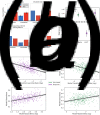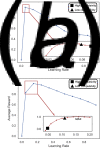Disrupted state transition learning as a computational marker of compulsivity
- PMID: 37310326
- PMCID: PMC10106291
- DOI: 10.1017/S0033291721003846
Disrupted state transition learning as a computational marker of compulsivity
Abstract
Background: Disorders involving compulsivity, fear, and anxiety are linked to beliefs that the world is less predictable. We lack a mechanistic explanation for how such beliefs arise. Here, we test a hypothesis that in people with compulsivity, fear, and anxiety, learning a probabilistic mapping between actions and environmental states is compromised.
Methods: In Study 1 (n = 174), we designed a novel online task that isolated state transition learning from other facets of learning and planning. To determine whether this impairment is due to learning that is too fast or too slow, we estimated state transition learning rates by fitting computational models to two independent datasets, which tested learning in environments in which state transitions were either stable (Study 2: n = 1413) or changing (Study 3: n = 192).
Results: Study 1 established that individuals with higher levels of compulsivity are more likely to demonstrate an impairment in state transition learning. Preliminary evidence here linked this impairment to a common factor comprising compulsivity and fear. Studies 2 and 3 showed that compulsivity is associated with learning that is too fast when it should be slow (i.e. when state transition are stable) and too slow when it should be fast (i.e. when state transitions change).
Conclusions: Together, these findings indicate that compulsivity is associated with a dysregulation of state transition learning, wherein the rate of learning is not well adapted to the task environment. Thus, dysregulated state transition learning might provide a key target for therapeutic intervention in compulsivity.
Keywords: Anxiety; compulsivity; computational modelling; model-based learning; transdiagnostic.
Conflict of interest statement
None.
Figures




References
-
- Altman, E. G., Hedeker, D., Peterson, J. L., & Davis, J. M. (1997). The Altman self-rating mania scale. Biological Psychiatry, 42(10), 948–955. - PubMed
-
- Bandura, A. (1978). Reflections on self-efficacy. Advances in Behavior Research and Therapy, 1(4), 237–269.
-
- Beck, A. T., Steer, R. A., & Brown, G. K. (1996). Beck depression inventory-II. San Antonio, 78(2), 490–498.

